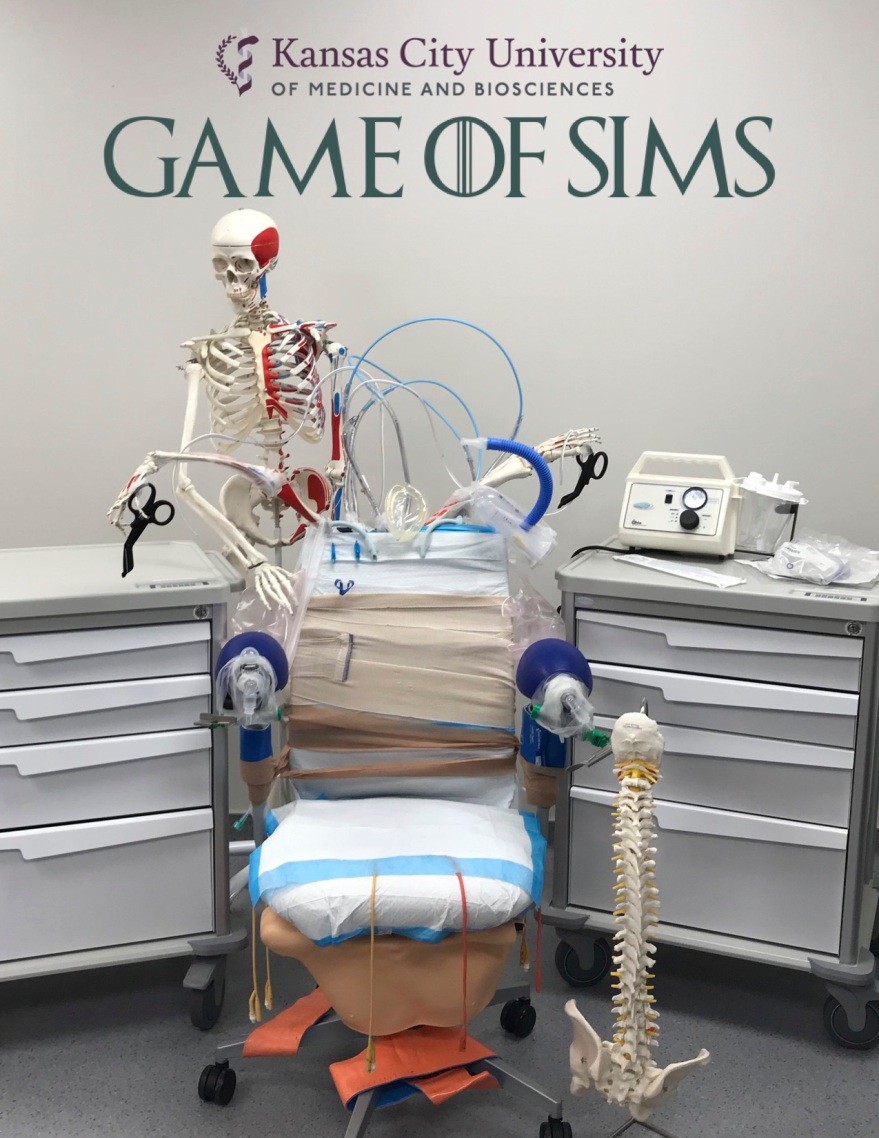
The Game of Sims
by Tanner Riscoe (OMS-III), Halden Nielsen (OMS-IV), Matthew McAulliffe (OMS-III)
KCU-Joplin students, OMM-fellows, faculty and staff participated in the 2019 Healthcare Simulation Week from September 16th – September 20th. Healthcare Simulation Week celebrates professionals who use simulation to improve the safety, effectiveness, and efficiency of healthcare delivery. It also raises awareness in communities nationwide about how healthcare simulation is leading to safer and more knowledgeable patient care.
KCU-Joplin had a unique take on the 2019 Healthcare Simulation Week by holding an event for students to demonstrate their clinical prowess in teams through the “Game of Sims”… a take on the popular book and television series, “Game of Thrones”. This event was sponsored by the KCU-Joplin Human Patient Simulation Department.
The “Game of Sims” involved teams of first and second year medical students who competed in a series of two patient simulations and three procedural skill stations. The patient simulations were a maximum of fifteen minutes with points given to teams that could stabilize and initiate appropriate treatment the fastest. The three procedural skill stations were vitals signs, intubation, and an upper extremity exam utilizing osteopathic manipulative treatment (OMT). The skill stations were given points based on proximity to predetermined values for the vital signs and a rubric was used for the intubation and upper extremity exam. Regarding the osteopathic component of this competition, students had an opportunity to demonstrate their skills in identifying somatic dysfunction of the upper extremity and rational osteopathic treatment for common upper extremity complaints.
This unique event brought together students in both the first and second year KCU-Joplin classes, and this instilled the spirit of camaraderie, osteopathic medicine, and medical simulation. Ultimately, events such as this serve to help further the development of clinical skills and bring awareness to the utility of medical simulations and standardized patients in our osteopathic medical education.
